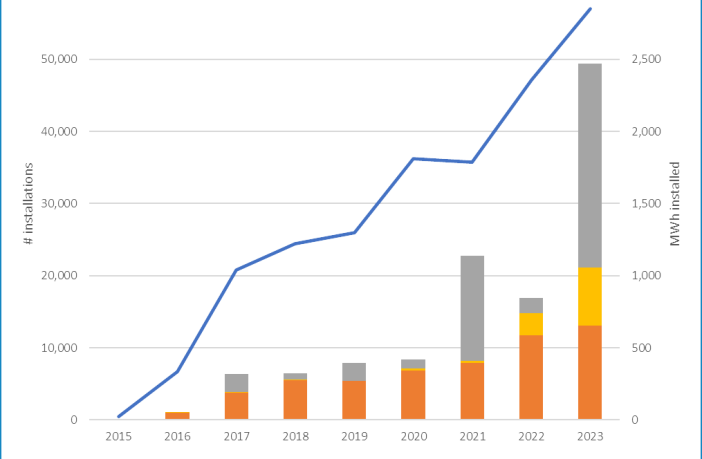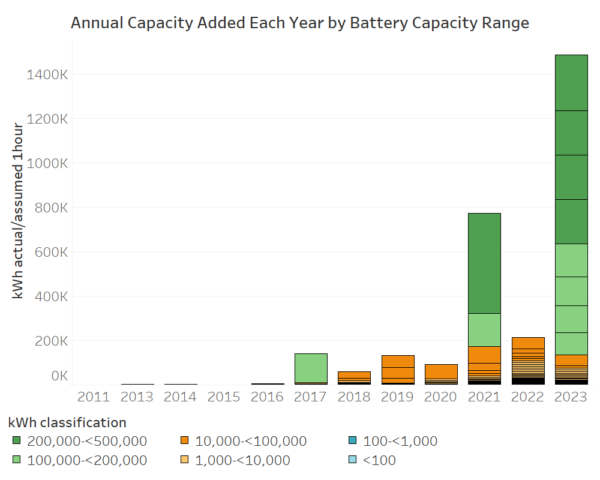- Solar and storage analyst Sunwiz said 2023 was the year of the big battery, with a record number of large-scale battery energy storage systems featuring almost 1 GW/1.5 GWh of combined capacity energized across Australia.
The 2024 annual SunWiz Australian Battery Market report shows that grid-scale battery energy storage projects with a record total capacity of 1,410 MWh were installed in Australia last year.
“2023 was the year of the big battery,” SunWiz Managing Director Warwick Johnston said, noting that “deployment levels smashed previous records.”
The amount of utility-scale battery energy storage capacity energized in 2023 was twice that rolled out in the previous record-setting year of 2021.
“The figures signal the coming of age of the big battery,” Johnston said. “Clearly the deployment volume is at a new level, but it’s the number of projects being energised that has stepped up to a new level.”
Only two projects of more than 100 MWh capacity were energized in 2021, with the Victorian Big Battery accounting for more than half of that year’s total.
Johnston said there were eight large-sale battery projects over 100 MWh energised in 2023, four of which were in excess of 200 MWh capacity, and he expects the sector to deliver another record high in 2024.
“The capacity currently under construction is six times the amount at the same point last year,” he said.
Despite the massive year for grid-scale storage, home energy storage systems remain the largest cumulative source of battery capacity in Australia.
A record 57,000 residential battery energy storage systems, with a combined capacity of 656 MWh, were installed in Australian homes in 2023, up 21% on the previous year. About 250,000 Australian homes, totaling 2,770 MWh, now have battery systems.
The ratio of battery installations to solar installations was also up in 2023, climbing to 17%, with one energy storage system installed for every six rooftop PV systems, up 15% on 2022.
A record 402 MWh of battery energy storage capacity was installed in Australian businesses in 2023, taking the total across residential, commercial and large-scale to a record 2,468 MWh of battery energy storage capacity deployed in the 12 months.
Johnston said the report demonstrates batteries are already reshaping the nation’s energy supply. “Home batteries are democratizing energy storage in the same way that solar power democratised electricity production,” he said, noting that the benefit of batteries reaches far beyond their owners. “Batteries can also help stabilise electricity grids and facilitate further installations of low-cost solar power.”
SunWiz said it expects more than 20% growth in residential battery energy storage deployments in 2024, plus 50% growth in commercial storage.
“All up we predict over 5 GWh deployed in 2024, which would be double the volume in 2023,” the company said, but cautioned that much of that prediction depends upon 2024’s deployment levels of grid-scale storage.
Author: Dave Carrol
This article was originally published in pv magazine and is republished with permission.
















